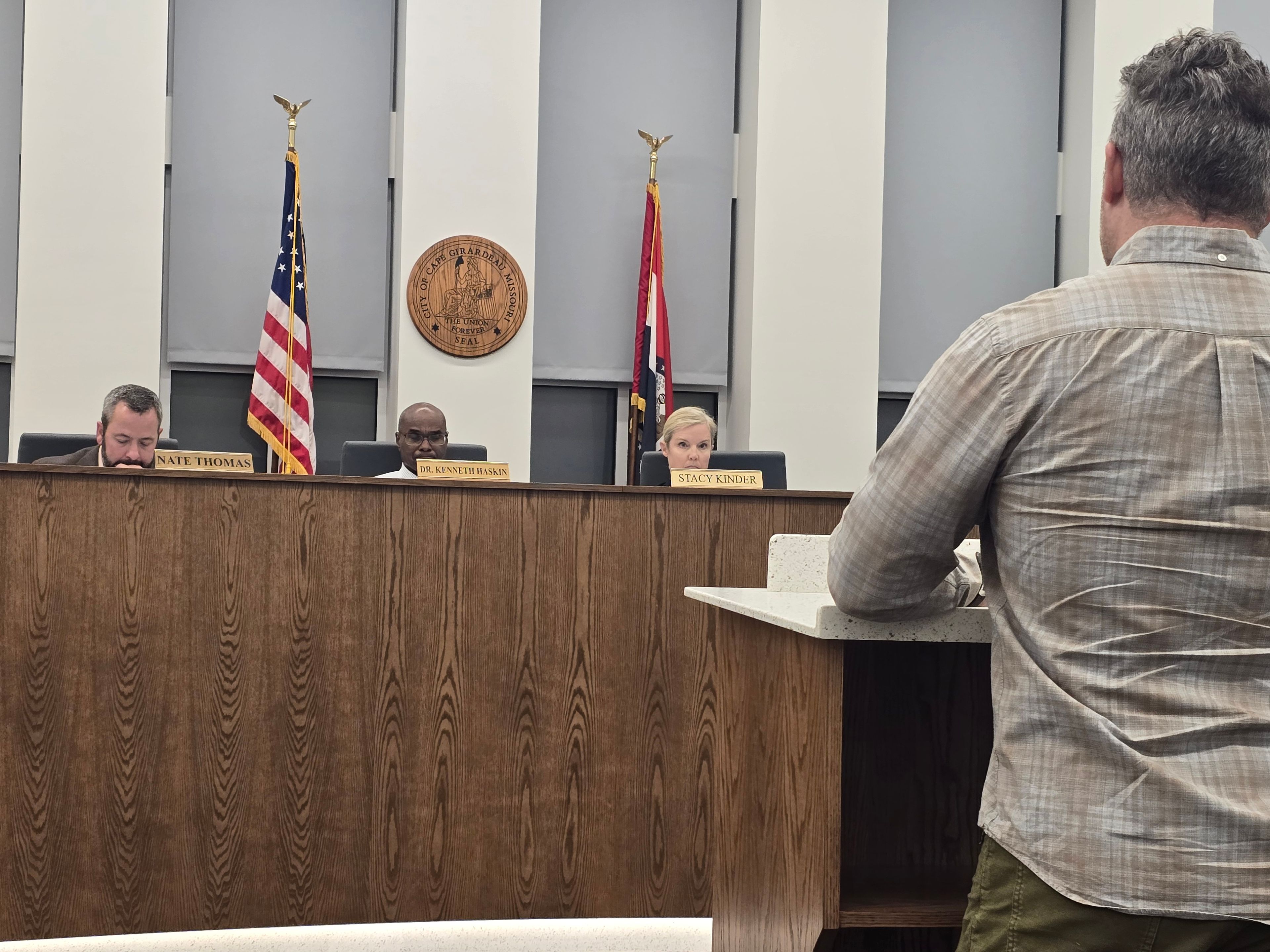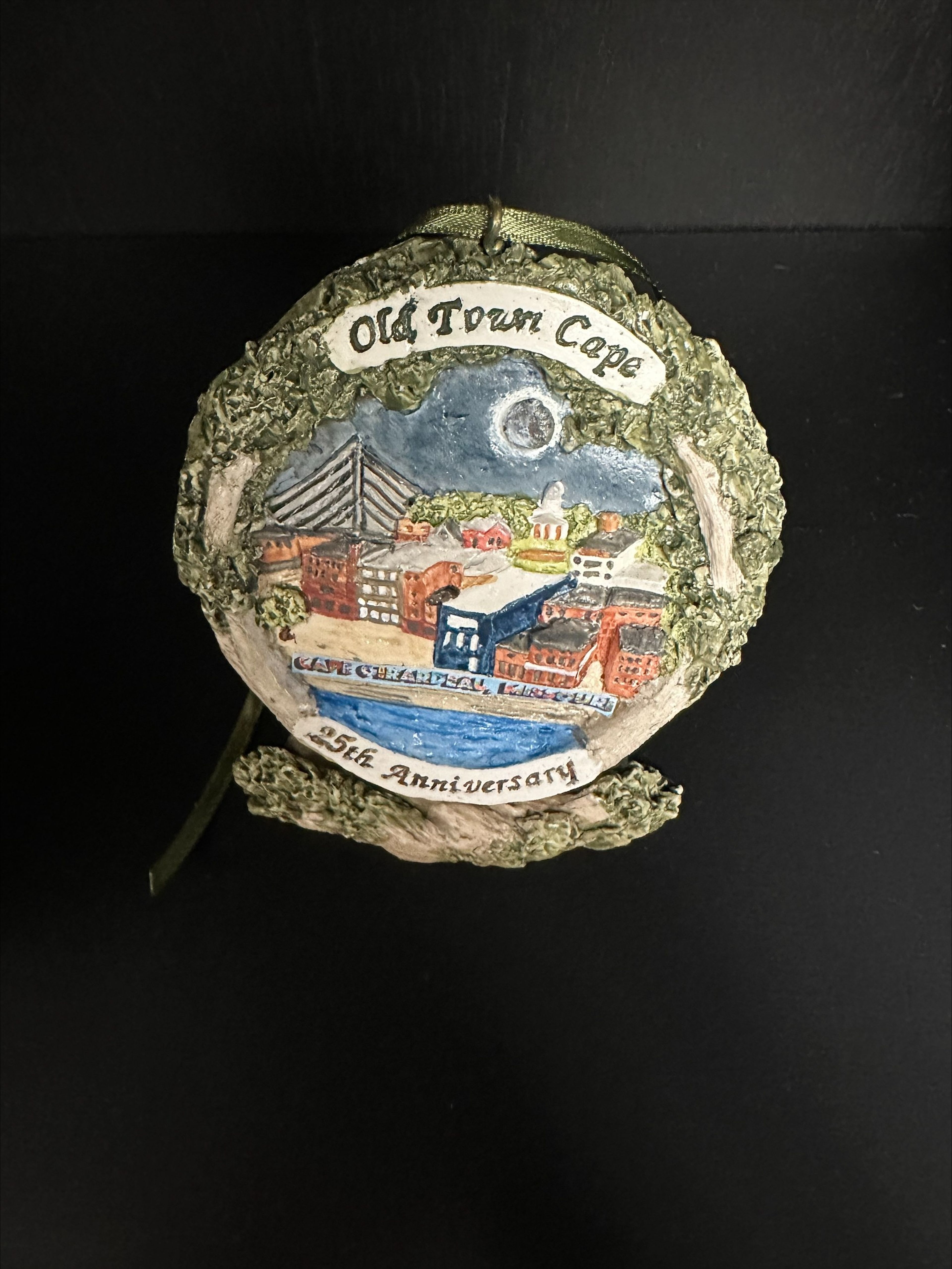CROW HOUSE ON HISTORIC REGISTER
She opens the wooden drawer and pulls out a photo album covered in a red patchwork quilt print. Beneath the cover lies a letter she wrote. "This is the little brick house I owned and lived in from 1963 until 1997... What a joy it was to help the dear old thing `come alive' again."...
She opens the wooden drawer and pulls out a photo album covered in a red patchwork quilt print. Beneath the cover lies a letter she wrote.
"This is the little brick house I owned and lived in from 1963 until 1997... What a joy it was to help the dear old thing `come alive' again."
Seconds earlier, Judith Ann Crow read a letter from the Missouri Department of Natural resources informing her that "The House at 323 Themis Street," her home for 34 years, was placed on the National Register of Historic Places on June 27.
"It's a wonderful feeling to know that it is going to go on being," Crow said, a smile growing on her face.
Crow fell in love with the house the first time she saw it in 1946. Years later, she bought the house. It was a wreck, but she still loved it, she said as she recalled the peeling wallpaper.
Now two things come to mind when Crow thinks of her house: happiness and hard work.
From the day she moved in, her energy went to restoring the small white structure's architectural integrity.
"It is so important to preserve historic sites because it's representative of those people who first came here," she said. "If we save only the big houses and the mansions, then we lose the history of those who worked together side-by-side and lived together side-by-side.
No longer able to care for the house, Crow sold it to two friends, Diana Steele and Sharon Sanders, but not before she began the research and application process for the historic register.
Sanders and Steele have picked up where Crow was forced to leave off. Their plans include dry-walling, repairing plaster, painting and re-doing wallpaper, all in an effort to retain the structure's history.
"When you put elbow grease into a house, it becomes a part of you," Crow said. "Now with Sharon and Diana, that tradition is carried on."
Crow's house was built in sections. Although it can't be proven, it is believed the oldest room is the kitchen. An abstract of the building gives 1821 as the year it was built, but Scott Cross, the register application preparer, listed 1864 because it was the first year a German's name appeared on a deed for the house, Sanders said.
From time to time, another addition was made. Crow, a former longtime librarian for the Southeast Missourian, herself added a bedroom, a sitting room, a study and a garage in the 1960s.
Crow's research shows the front section was constructed in the 1850s. This section reflects the German architecture for which the house was declared historically significant: a recessed front doorway, slightly arched windows and 11-foot ceilings.
The house defines German style.
It's simplistic, "a working man's house," Sanders said. The common bond brick illustrates a lack of detail except for the top row of turnbricks that jut out in miniature triangles.
The bricks lead the previous and current owners to believe Joseph Lansman built this portion of the house. Lansman was known for designing and constructing the Common Pleas Courthouse and many other buildings throughout Cape Girardeau during this time period.
Other historical names parallel "The House at 323 Themis Street." Uriah Brock, the only known Revolutionary War soldier to be buried in Cape Girardeau, died in the house in 1845, Sanders said.
Steele even jokes that Brock haunts the house. Since the house is not level, the doors are notorious for swinging open and closed. Whenever a door suspiciously moves, blame is given to Brock, Steele laughed.
History emanates from every wall, crook and cranny. The wrought-iron fence lining the front sidewalk came from a Civil War hospital, Sanders said. The shutters on the inside windows once belonged to a house on Morgan Oak Street. The old-fashioned kitchen stove covers a door in the hardwood pine floor that leads to a fruit cellar.
The 50 or more photographs in Crow's album highlight a more personal history. One that includes her.
Photographs show how she kept her home. Crystal filled the china cabinets. Angel figurines, collectors' plates and candlesticks lined the marble-topped bureaus. Her master's degree in education from the University of Missouri-Columbia hung on the wall.
Sanders remembers well what it all looked like. Her favorite part, the original staircase, a one-piece walnut banister with poplar pegs, is a trademark of the house that she often looked to as a refuge.
Crow's Nest, she called it.
"When things would go wrong, when I had a bad day at work, it became a haven, a safe place," she said. "I fell in love with it."
Just like Crow.
CAPE GIRARDEAU HISTORIC PLACES
Other Cape Girardeau sites on the National Register of Historic Places
-- D.A. Glenn House, 325 S. Spanish, built 1883.
-- Oliver-Leming House, 740 North St., built 1898.
-- St. Vincent De Paul Catholic Church, 131 S. Main, built 1853.
-- Col. George C. Thilenius House (Longview), 100 Longview Place, built 1871.
-- James Reynolds House, 623 N. Main, built 1857.
-- Hanover Lutheran Church, 2949 Perryville Road, built 1887.
-- George B. Clark House, 6 Fountain, built 1881.
-- Klostermann Block/Alliance Building, 7, 9, 11, 13, 15 S. Spanish, built 1905.
Historic landmarks in Cape Girardeau
-- Old Lorimier Cemetery, 500 N. Fountain, established 1808.
-- Christian and Gladys Stiver House, 406 N. Louisiana, built 1839.
-- Cape River Heritage Museum, 538 Independence., built 1909.
-- Hunze House, 312 Bellevue, built 1891.
-- The Briney House, 25 N. Fountain, built 1904; now owned by Wayne and Carolyn Nenninger.
-- D.A. Glenn House, 325 S. Spanish, built 1883.
-- St. Vincent De Paul Catholic Church, 131 S. Main, built 1853.
-- Col. George C. Thilenius House (Longview), 100 Longview Place, built 1871.
-- James Reynolds House, 623 N. Main, built 1857.
-- George B. Clark House, 6 Fountain, built 1881.
-- Klostermann Block/Alliance Building, 7, 9, 11, 13, 15 S. Spanish, built 1905.
-- The Whitelaw House, 423 Themis, built 1890.
-- The Huhn-Harrison House, 340 S. Lorimier, built 1906.
-- Hanover Lutheran Church, 2949 Perryville Road, built 1887.
Connect with the Southeast Missourian Newsroom:
For corrections to this story or other insights for the editor, click here. To submit a letter to the editor, click here. To learn about the Southeast Missourian’s AI Policy, click here.








